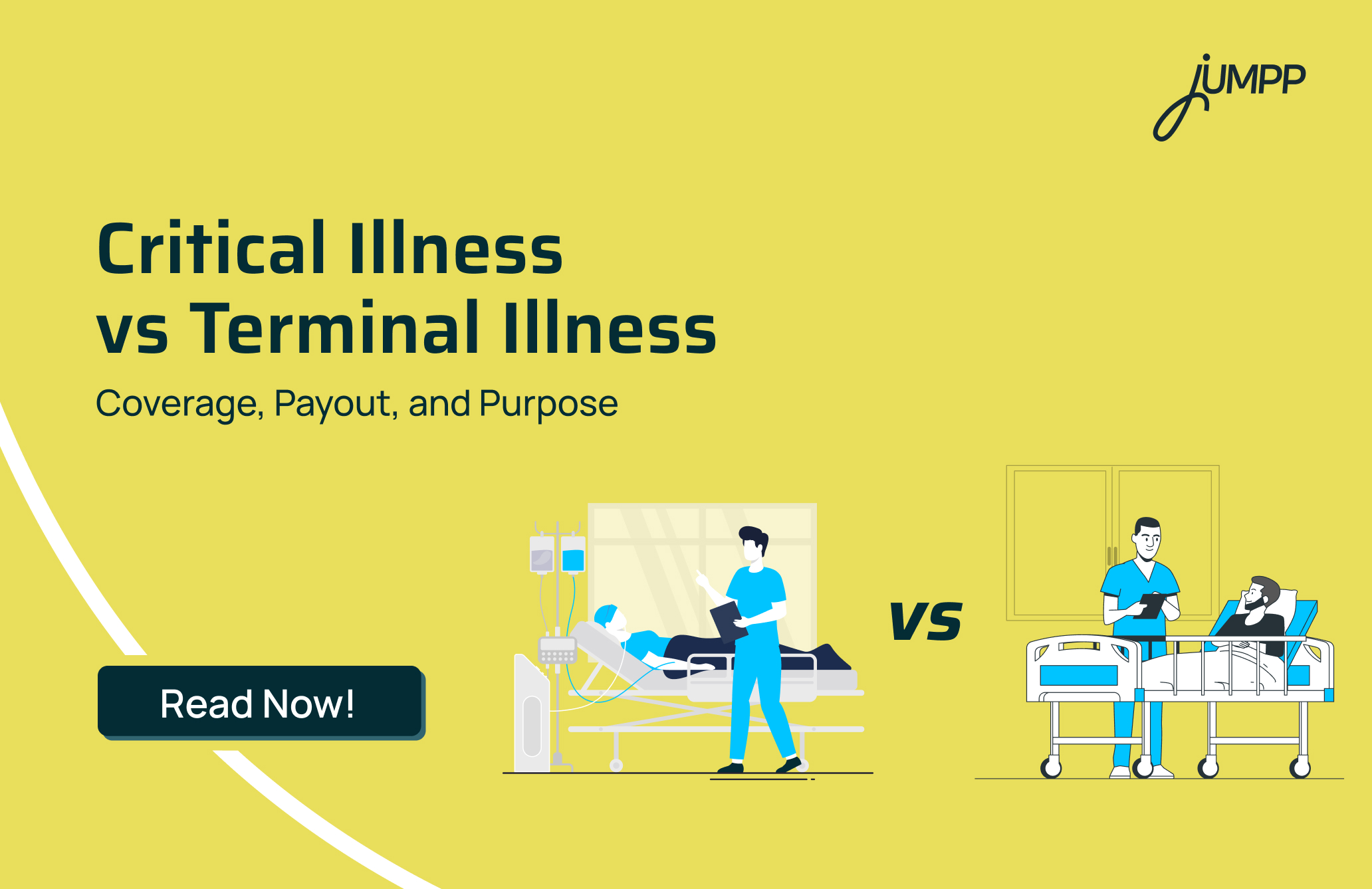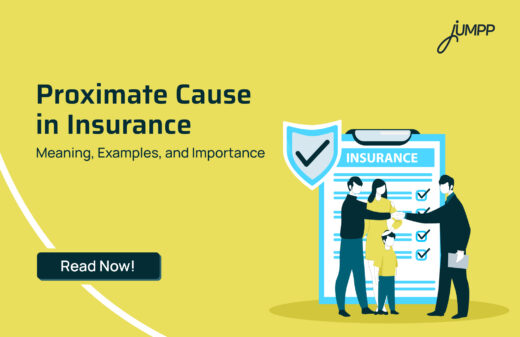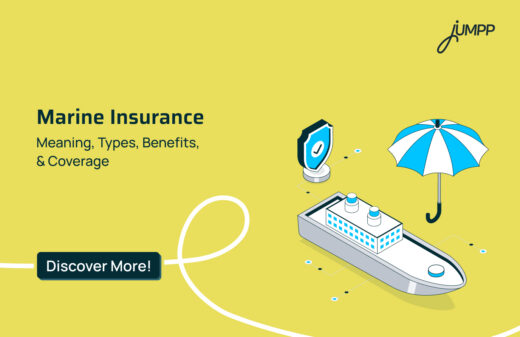Terminal Illness vs Critical Illness in Insurance: The Difference You Need To Know

The difference between a claim being paid during your lifetime or only after death often comes down to two words in your policy: terminal illness vs critical illness. Terminal illness refers to a situation where your survival is unlikely beyond 12 months. On the other hand, critical illness refers to severe diseases that are life-threatening but can still be managed or treated.
Policyholders often confuse terminal illness cover with critical illness cover, not realising that the two trigger payouts in very different circumstances.
Let us today explore the difference between critical illness insurance cover and terminal illness insurance cover!
Terminal Illness vs Critical Illness in Insurance
A critical illness is a severe, life-threatening, but treatable condition. In contrast, a terminal illness is an incurable condition with a medical prognosis of death within a short, defined period. This is usually less than a year.
The difference lies in the possibility of recovery and the timing of the payout.
Let’s go deeper!
Terminal Illness vs Critical Illness – How Do They Differ
Insurance companies draw a sharp line between the two because the financial implications are very different.
| Basis | Terminal Illness | Critical Illness |
| Recovery | The illness is incurable and will inevitably lead to death.This is typically within 6 to 12 months. | Recovery is possible with advanced medical treatment. However, the process may be long, expensive, and uncertain. |
| Claim Trigger | A lump-sum benefit is paid when doctors confirm life expectancy is less than the period defined in the policy, most often 12 months. | A lump-sum benefit is paid on the first diagnosis of a covered illness, regardless of life expectancy. The insured must survive a short period (usually 15–30 days) after diagnosis. |
| Purpose of Payout | This functions as an accelerated death benefit. | It is designed to provide financial aid for treatment and recovery. |
| Some common situations and illnesses | Advanced cancer, end-stage organ failure (kidney, liver, heart), degenerative conditions like late-stage Alzheimer’s, and advanced neurological disorders. | Heart attack of a specified severity, stroke, kidney failure requiring dialysis, major organ transplant, paralysis, or early-stage cancer. |
Start building your safety net today with the best save money app. Little steps now can grow into financial security for important moments in your life.
What is Terminal Illness in Term Insurance
In term insurance, a terminal illness refers to a serious, incurable condition expected to result in death within a short period. This time span is usually 6 to 12 months.
Many policies allow the policyholder to receive part or all of the death benefit early through an accelerated death benefit. This can help cover medical costs and support the family during a difficult time. However, a confirmation from two certified doctors is generally required, and this benefit is often added as a rider to the base policy.
Terminal Illness Insurance Cover
Terminal illness coverage is often misunderstood. It is not a separate policy in most cases but an accelerated death benefit included in life insurance or sometimes offered as an optional rider. Its purpose is to give individuals with a life-limiting diagnosis access to funds while they are still alive.
How Terminal Illness Insurance Cover Works
Early Payout of Death Benefit: When a medical diagnosis confirms a terminal condition with a limited life expectancy, policyholders can access a portion of their life insurance payout immediately.
Medical Verification Required: Insurers require certification of the terminal condition by qualified medical professionals. Life expectancy windows are usually defined between six and twenty-four months.
Reduction in Death Benefit: The amount received early is deducted from the total death benefit. Whatever remains is passed on to the beneficiaries after death.
Flexible Fund Usage: These funds are not restricted to medical expenses. They can be used for palliative care, expensive treatment that improves quality of life, settling debts, or simply providing comfort and security to the family.
Covered Conditions in Terminal Illnesses
Terminal illnesses are untreatable conditions that are expected to lead to death.
These include-
- Advanced-stage cancer
- End-stage heart failure
- Severe kidney disease
- Motor neurone disease
- Late-stage Alzheimer’s disease
Who Should Consider Terminal Illness Coverage
- Individuals looking to secure their dependents’ financial future even before death occurs.
- People with loans, mortgages, or other financial liabilities that could burden their family if left unpaid.
- Anyone seeking to access funds for end-of-life care and comfort.
- Those who want the reassurance that, despite a terminal diagnosis, practical arrangements have been made for family stability and comfort.
What is Critical Illness in Term Insurance
In a term life insurance policy, a critical illness refers to a serious, life-threatening medical condition like cancer, heart attack, or stroke.
Unlike terminal illness cover, critical illness cover is not automatically included in most term policies. It is usually offered as a rider for an additional premium.
If you are diagnosed with a covered illness, this rider pays out a lump sum to help cover medical costs, lost income, and other financial responsibilities. It provides a safety net during a health crisis.
Know how to Select an Ideal Critical Illness Insurance Cover!
Critical Illness Insurance Cover
A critical illness insurance policy is a lifeline for moments you hope never arrive but must be prepared for.
This cover provides a lump-sum cash benefit if you are diagnosed with one of the serious illnesses listed in your policy. The payout is unconditional with respect to your actual medical expenses.
How Critical Illness Insurance Cover Works
Lump-Sum Payment: When a diagnosis of a covered critical illness is confirmed, the insurer releases a one-time, tax-free cash payout. This is not tied to bills submitted or hospital stays completed.
No Hospitalisation Required: Unlike traditional health insurance, which reimburses treatment costs after the fact, critical illness insurance often requires only a confirmed diagnosis.
Flexible Coverage Options: This protection can come as a stand-alone policy or as a rider attached to your existing life or health insurance.
Survival Period: Most policies include a survival period, typically between 15 and 30 days. You must survive this duration post-diagnosis to claim the benefit.
Waiting Period: Initial waiting periods, often around 90 days, are standard in critical illness policies. Claims cannot be made during this time.
Covered Conditions in Critical Illnesses
While each insurer maintains its own list, the core conditions are usually the ones with the most severe financial and emotional impact:
- Heart attack (of specified severity)
- Stroke
- Cancer
- Kidney failure requiring ongoing dialysis
- Major organ transplants
- Paralysis
- Aortic surgery
Who Should Consider Critical Illness Insurance?
- Primary earners who need to secure income for themselves and their families if illness makes working impossible.
- Individuals with a family history of serious illnesses.
- Professionals in high-stress environments, where lifestyle and workload can trigger serious conditions.
- People with limited savings who would be financially vulnerable if faced with a sudden, high-cost illness.
Terminal Illness Cover vs Critical Illness Cover – Which One Should You Choose
Terminal illness cover is designed for situations where recovery is not possible. The focus is on support when there is no cure.
A critical illness cover is for serious but potentially recoverable illnesses like cancer, heart attack, or stroke. The focus is on financial relief during the fight for your health.
Which should you choose?
- If you want protection for life-threatening conditions where recovery is possible, a critical illness rider makes sense.
- If you want support when faced with an incurable, terminal condition, go for terminal illness coverage.
- Many people choose both if they can, as they cover different stages and types of health risks.
Looking for insurance options that also help you grow your wealth?
Explore What is ULIP? to understand how Unit Linked Insurance Plans combine protection with long-term investment benefits.
Terminal Illness Cover vs Critical Illness Cover- FAQs
Cancer can be either, depending on its stage and prognosis. In its early stages, it is a critical illness that can be treated, but in advanced, incurable stages, it is considered a terminal illness.
A critically ill patient is in a severe but potentially curable state, with the focus on aggressive treatment and recovery. A terminally ill patient has an incurable condition with a limited life expectancy. Their treatment is focused on comfort and managing symptoms.
The most commonly cited five major critical illnesses are heart attack, stroke, cancer of a specified severity, kidney failure, and major organ transplant. Coronary artery bypass surgery is also often included in this group.
The “big 3” critical illnesses typically refer to the most common and expensive conditions: heart attack, stroke, and cancer. These are major categories that require extensive, costly medical care.
Yes, there is a distinct difference; a critical illness is a serious condition with a chance of recovery, while a terminal illness is incurable and expected to lead to death within a limited time.
No, standard critical illness insurance provides a lump-sum payout upon diagnosis and survival of a covered illness, not a death benefit. Death coverage is provided by life insurance, though a critical illness rider can be added to some policies.
A critical illness is a severe, life-threatening health condition defined and listed by an insurance policy. Examples include a heart attack, stroke, cancer, kidney failure, and major organ transplants.






